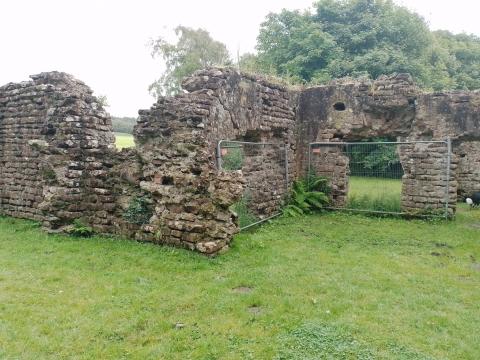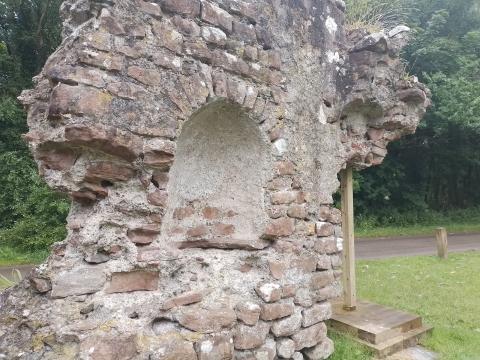Ravenglass Roman Bathhouse

Relatives and I called at Ravenglass up in Cumberland this month. We had twice, previously failed to locate the remains of a Roman bathhouse, and a closed footbridge and crabby, self-appointed parking warden almost prevented a third attempt. When we arrived, however, I was all agog. Unlike most Roman bathhouse remains, which are little more than bumps in a field or foundations and surviving hypocaust, this one had walls taller than me. There were even two surviving niches inside which statues of nymphs or classical deities were placed. Although most of it has fallen and been removed, here is a Roman remain for which one’s imagination need not be worked to exhaustion. How did it manage to survive when practically all its fellow establishments disappeared? Almost certainly, some enterprising medieval farmer turned in into a barn or home with thatched roof while employing wattle and daub to fill any gaps in the broken walls. Practical usage, rather than love for heritage or respect for the ancients preserved this fine relic for the modern age.

There are many who do not care for church history and traditions. They have little interest in Roman soldiers or ancient Greek verbs. They have little interest in puritans or reformers, nor in the distinctions between Arminian and Calvinist, evangelical and charismatic. Yet they know there is something about Christianity which attracts them. Not only is it the best ‘method’ of living one’s life, but also belief in the gospel is the only ‘way’ to get to heaven in the afterlife. They understand that it is no mere philosophy or school of thought, but it has practical application and genuinely worthwhile outcomes. Whatever one’s thoughts (or lack thereof) regarding theological nuance, ecclesiastical pedigree and historical precedent, come to Jesus Christ, who is the very meaning of life. Knowing Him and Him alone is all one needs for hope now and life thereafter.
- Log in to post comments


 Sunday Worship 10.45am & 6.00pm
Sunday Worship 10.45am & 6.00pm